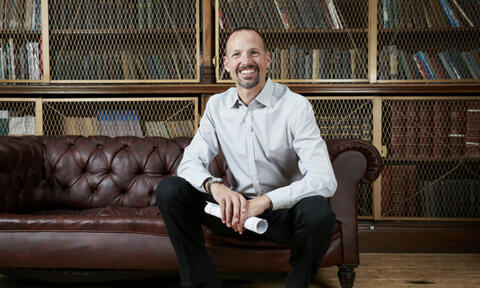
Written by
Published
Category
Key topics
Coronavirus could prove an unexpected spur to the digital transformation of businesses all around the world
There is nothing more modern than the commute to work. All over the world, billions of people hop in their cars, take a bus, or board a train every morning to get to work, only to reverse the process every evening.
One recent study estimated the average commuter in the US spends 226 hours per year commuting. And most countries, except Norway, do not consider time spent commuting as work, so commuters are generally not compensated for the time they spend on the road. Time wasted on your commute is simply a taken-for-granted inconvenience of the modern economy – except now, thanks to coronavirus, it’s not. Almost no one is commuting, and yet work goes on.
A brief history of the daily commute
It is worth stepping back and remembering work didn’t always involve a commute. In fact, it took several fundamental changes in society to produce it. First, during the Industrial Revolution, work moved from something you did on a farm or in your home to something you did in a factory or office. For all human history up to that point, work had been integrated with home and family, but in a relatively brief time it became something you did in a specialised setting for money.
Almost no one is commuting, and yet work goes on.
Second, the invention of the suburb moved most of the population away from those factories and offices. The same logic that drove the invention of the factory turned the city into something that was planned and rational rather than something that grew organically. The city planners clustered together housing with schools, hospitals, parks and all of the other amenities that support a middle-class life – and away from the noisy industry and attentive office spaces.
Finally, the arrival of the car, the ultimate consumer product, provided mobility to the masses and created the possibility of driving to work on the highway systems that rapidly spread across the industrialising world.
It requires a dramatic escalation of the support you provide employees who are working from home.
This all suddenly matters because the coronavirus is forcing millions of people to work from home and break the commuting habit. People are continuing to work together, but are commuting less, travelling less, and spending less time co-located. We are, put simply, working together in ways we wouldn’t have imagined possible before.
How to adjust your team to remote working
What does this mean for you as a leader and for your organisation? First, it requires a dramatic escalation of the support you provide employees who are working from home. This means ensuring your team has a good digital platform to interact on and that they all understand working on this platform is the “new normal”. It is not an option that they can access if they wish, but the way people now work together.
Second, it will require you to set clear and innovative policies to reshape behaviour and change expectations. For example, if you are a team leader, a short video call with your team every morning for a quick catchup on what everyone is doing often helps to replace part of the interaction that naturally comes from being co-located.
Once the pandemic has passed, it will not be “business as usual”.
Third, you can ensure there is a culture of experimentation that encourages your team to try new remote working practices and patterns. This transformation is not just about doing the things we did before in new ways, it is also about doing new things that we haven’t done in the past. As Sir Martin Sorrell recently said: “This extreme and tragic disruption will speed digital transformation… [t]here will be more home working because people will become more attuned to it”.
Working after COVID-19
But the bigger challenge lies ahead. Once the pandemic has passed, it will not be “business as usual”. Why shouldn’t people continue with remote working if there is no pressing reason to be in the office? Why would your staff want to go back to the daily grind of commuting to work and struggling through crowds at lunch to get a sandwich when they can work from home, save time, and spend more time with their families?
In fact, leaders should take this opportunity to focus on the permanent digital transformation of work in order to increase efficiency, employee satisfaction, and attractiveness to the best new talent (it is worth noting that flexible working and working from home are two of the most highly valued workplace policies). While the pandemic is a dark cloud, it may have a silver lining – that is, if leaders take advantage of this opportunity to accelerate the digital transformation of their organisations.




